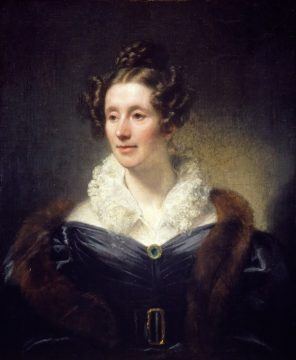Maria Popova at Brain Pickings:
 Despite her precocity and her early determination, it took Somerville half a lifetime to come abloom as a scientist — the spring and summer of her life passed with her genius laying restive beneath the frost of the era’s receptivity to the female mind. When Somerville was forty-six, she published her first scientific paper — a study of the magnetic properties of violet rays — which earned her praise from the inventor of the kaleidoscope, Sir David Brewster, as “the most extraordinary woman in Europe — a mathematician of the very first rank with all the gentleness of a woman.” Lord Brougham, the influential founder of the newly established Society for the Diffusion of Useful Knowledge — with which Thoreau would take issue thirty-some years later by making a case for “the diffusion of useful ignorance,” comprising “knowledge useful in a higher sense” — was so impressed that he asked Somerville to translate a mathematical treatise by Pierre-Simon Laplace, “the Newton of France.” She took the project on, perhaps not fully aware how many years it would take to complete to her satisfaction, which would forever raise the common standard of excellence. All great works suffer from and are saved by a gladsome blindness to what they ultimately demand of their creators.
Despite her precocity and her early determination, it took Somerville half a lifetime to come abloom as a scientist — the spring and summer of her life passed with her genius laying restive beneath the frost of the era’s receptivity to the female mind. When Somerville was forty-six, she published her first scientific paper — a study of the magnetic properties of violet rays — which earned her praise from the inventor of the kaleidoscope, Sir David Brewster, as “the most extraordinary woman in Europe — a mathematician of the very first rank with all the gentleness of a woman.” Lord Brougham, the influential founder of the newly established Society for the Diffusion of Useful Knowledge — with which Thoreau would take issue thirty-some years later by making a case for “the diffusion of useful ignorance,” comprising “knowledge useful in a higher sense” — was so impressed that he asked Somerville to translate a mathematical treatise by Pierre-Simon Laplace, “the Newton of France.” She took the project on, perhaps not fully aware how many years it would take to complete to her satisfaction, which would forever raise the common standard of excellence. All great works suffer from and are saved by a gladsome blindness to what they ultimately demand of their creators.
more here.
